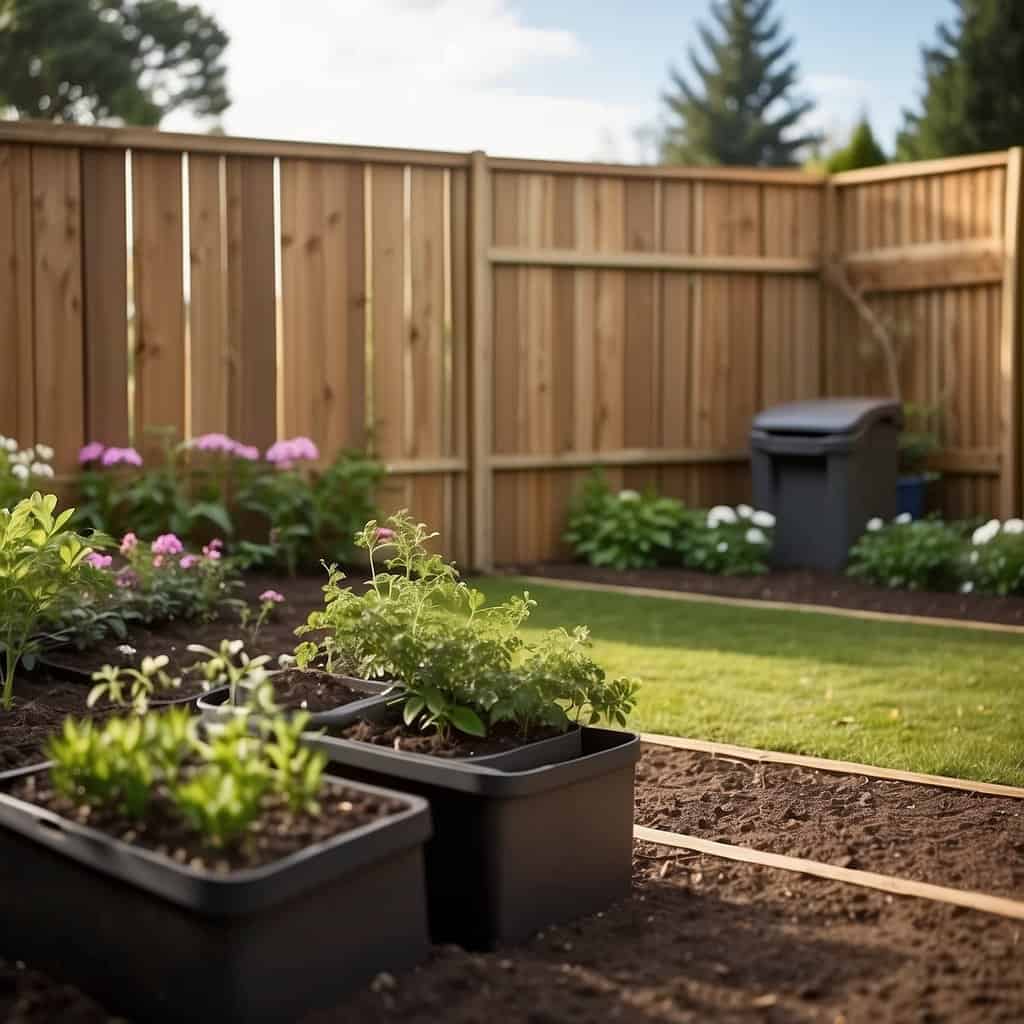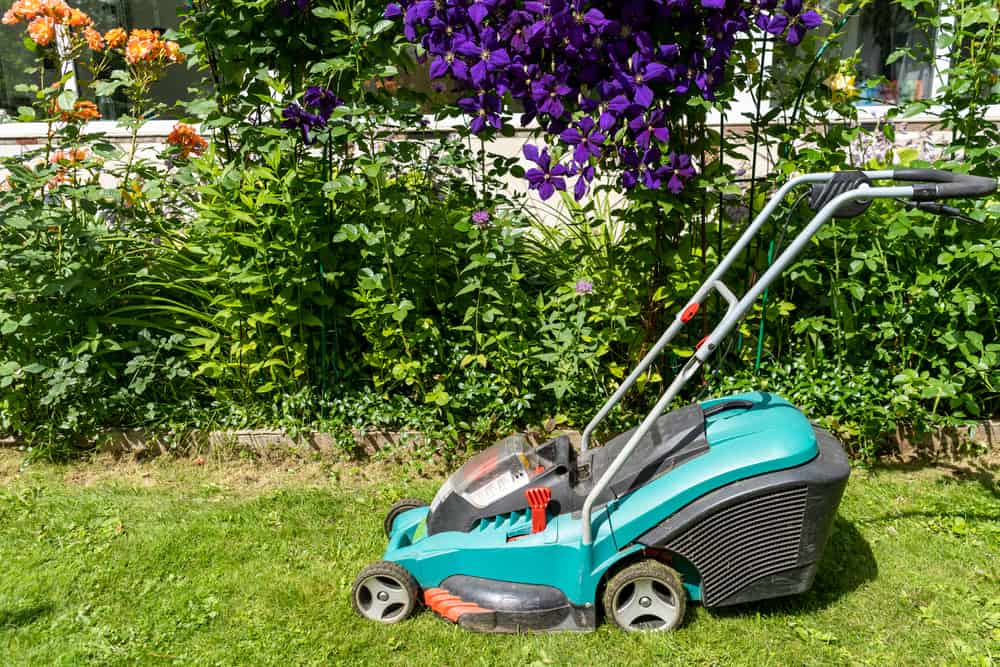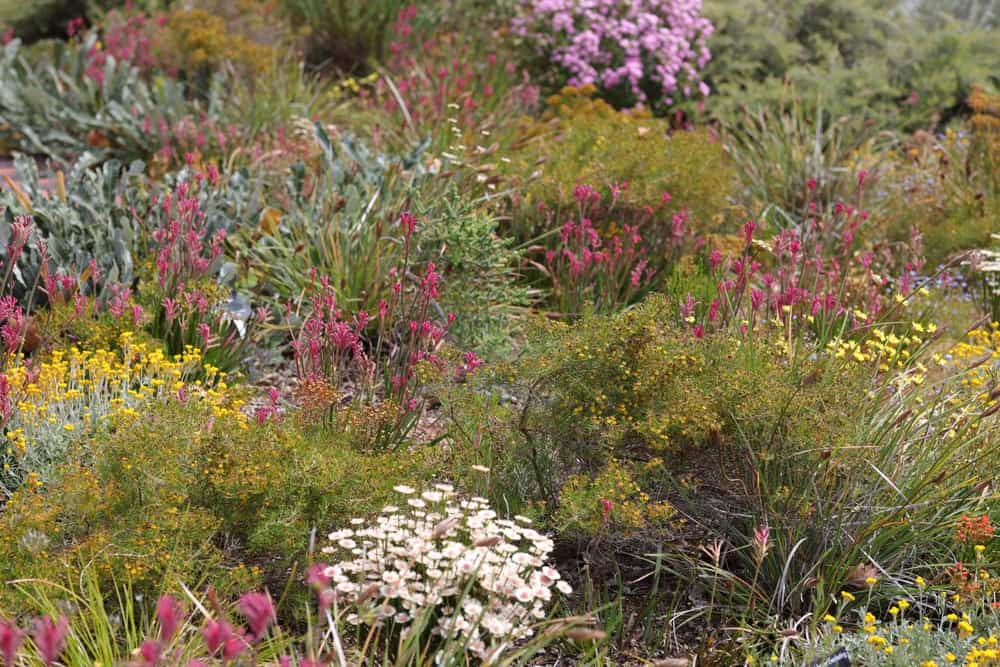Are you tired of using traditional lawn care methods that seem to do more harm than good to the environment? You’re not alone.
Many gardeners struggle with the realization that their efforts to maintain a beautiful lawn could be contributing to biodiversity loss, water wastage, and soil degradation.
It’s time to switch to eco-friendly lawn care – not just for the sake of appearances, but to actively support the health of your local ecosystem and make a positive environmental impact.
Traditional lawn care, with its reliance on chemical fertilizers and pesticides, poses significant risks to our planet. These chemicals can contaminate waterways, harm beneficial wildlife, and damage the soil. But there’s a better way!
By embracing sustainable practices like using organic fertilizers and natural weed control, you can achieve a vibrant, lush lawn without the guilt of harming the environment.
In our guide, we’ll show you how to conserve water effectively and choose the right grass types for Australian climates, creating a resilient, beautiful lawn that requires less water and maintenance.
Learn how to nurture your lawn’s soil health, master efficient mowing techniques, and promote deeper root growth.
Join us in transforming your backyard into a thriving, eco-friendly space. Your journey towards a healthier, more sustainable environment begins right here.
Benefits of Eco-Friendly Lawn Care
Adopting eco-friendly lawn care practices offers you multiple benefits, which not only help the environment but also can improve your garden’s overall health.
- Reduced Environmental Impact: By minimising the use of harmful pesticides, you are protecting local ecosystems. Your eco-conscious choices support a diverse lawn that can be home to beneficial insects, birds, and other wildlife.
- Healthier Soil: Testing and enhancing your soil naturally can lead to a thriving lawn. Eco-friendly fertilisers enrich the soil without the side effects of chemical alternatives, and by leaving grass clippings on your lawn, you’re recycling nutrients back into the ecosystem.
- Enhanced Biodiversity: Natural lawn care practices encourage a diverse range of flora and fauna. Avoiding pesticides and herbicides helps beneficial insects, birds, and other wildlife to thrive in your garden.
- Water Conservation: Eco-friendly lawn care often involves techniques for efficient water use, like installing rain barrels and watering deeply but less frequently.
- Lawn Resilience: Eco-friendly practices often lead to stronger, more resilient lawns. Healthy soil and reduced chemical dependence mean lawns are better equipped to withstand pests, diseases, and weather extremes.
- Safer for Families and Pets: Avoiding toxic chemicals in lawn care means a safer environment for children and pets who play on the lawn.
- Cost Savings: By reducing water usage and nurturing a self-sustaining garden through the recycling of organic matter, you might find your maintenance costs are lower in the long term.
- Aesthetics and Enjoyment: There’s a certain beauty to a well-maintained eco-friendly lawn. It’s not just about having green grass; it’s about creating a vibrant, natural space that you can feel good about.
By looking after your lawn in an environmentally friendly manner, you’re not only creating a beautiful garden for yourself but also contributing positively to the broader environment.
Fundamentals of Eco-Friendly Lawn Care
Creating an eco-friendly lawn incorporates smart design, plant selection, and sustainable maintenance practices that not only reduce your environmental footprint but also create a healthier space for your family and local wildlife. Here’s how you can achieve that in your garden:
Selecting the right type of grass
Choosing the right type of grass is the first step towards an eco-friendly lawn. Drought-tolerant grass species reduce the need for frequent watering and are more resilient to changing weather patterns.
In Australia, native grasses like buffalo grass or Queensland blue couch are great options because they are adapted to local climates and typically require less water and maintenance.
Soil Health
Healthy soil is the backbone of any eco-friendly lawn. Regular soil testing helps you understand its nutrient levels and pH, guiding you to make the right adjustments. Composting further improves soil health by adding organic matter, which encourages beneficial microorganism activity and improves water retention.
As we outline in our ultimate guide to lawn care, the ideal pH for most lawn grasses is slightly acidic to neutral, typically ranging from about 6.0 to 7.0. Here are some natural methods to adjust the pH of your soil
- For Lowering Soil pH (Making Soil More Acidic):
- Sulphur: Elemental sulphur is a natural mineral that can effectively lower soil pH when bacteria convert it to sulfuric acid. It’s slow-acting, so plan to apply it well before planting.
- Aluminium Sulphate or Iron Sulphate: These can lower soil pH more quickly than elemental sulphur. But use cautiously as they can add aluminium or iron to the soil.
- Organic Mulches: Pine needles, oak leaves, and peat moss can gradually acidify soil as they decompose.
- Coffee Grounds: Used coffee grounds can slightly lower soil pH and also add organic matter.
- For Raising Soil pH (Making Soil More Alkaline):
- Lime: Ground agricultural limestone is a natural mineral that raises soil pH. Dolomitic lime also adds magnesium. It’s slow-acting, so apply it several months in advance.
- Wood Ash: Wood ash can raise soil pH and also add potassium and other trace elements. Use it sparingly, as it can be quite potent.
Water Conservation
Water conservation is critical, especially in Australia’s climate. Implement smart watering practices by watering early in the morning or late in the afternoon to reduce evaporation. Consider installing a rain barrel to collect rainfall for watering your lawn, and explore options for drought-resistant landscaping to further reduce your water usage.
Reducing lawn area
Minimize the size of your lawn by creating garden plots or using native ground covers that require less water and upkeep. This not only reduces the demand for water and fertiliser but also increases biodiversity in your garden.
Natural Pest Management
Avoiding chemicals in pest management helps to protect both your lawn and the environment. Encourage natural predators like birds and beneficial insects by planting a diverse range of plants.
When needed, opt for organic and natural pest control solutions that are less harmful to the ecosystem. Some options you could use are:
- Neem Oil: neem oil is a versatile natural pesticide. It works as an insect repellent, feeding inhibitor, egg-laying deterrent, and growth regulator.
- Beneficial Insects: Introducing or encouraging beneficial insects in your garden is a natural way to control pest populations.
Adopting these practices can lead to a more sustainable and enjoyable garden that benefits both you and the natural environment around you.
Organic Lawn Maintenance Techniques
Adopting organic lawn maintenance techniques helps sustain your lawn’s health without relying on harsh chemicals. These methods are friendlier to the environment and can lead to a luscious, sustainable lawn space.
Organic Fertilising
To nourish your lawn without synthetic products, consider using organic fertilisers. They release nutrients at a slower pace, which is excellent for long-term lawn health. You can utilise animal manures or composted garden waste, but make sure to check the nitrogen levels to avoid burn.
A top-dress of seaweed solution or fish emulsion can also provide a gentle boost of essential nutrients.
Mowing Practices
When it comes to mowing your lawn, remember that taller grass can shade out weeds and minimise water loss from the soil. Aim to keep your lawn in the higher ranges of what it tolerates, for cool season grasses, that’s 60 to 90mm, and 25 to 60mm for warm season grasses.
Always use a sharp mower blade to ensure a clean cut and mow when the grass is dry to prevent disease spread.
Composting
Implementing a composting system turns your kitchen and garden waste into a rich soil conditioner, bolstering your lawn’s health. By composting leaves and grass clippings, you can recycle nutrients back into the soil, reducing the need for additional fertilisers.
A simple compost pile or bin can suffice, and regular turning will help speed up the decomposition process.
Electric Lawn Care Equipment
Electric mowers and whipper snippers are a game-changer for sustainable lawn care. These products are quieter and emit no exhaust compared to traditional petrol-powered equipment. Your reduction in reliance on fossil fuels for your lawn care will be particularly cut down if you have solar panels installed on your house, rather than relying on the main energy grid.
These battery-operated machines not only help you cut down on emissions but also can reduce your fuel costs over time.
Implementing Eco-Friendly Alternatives to Lawn
Adopting Eco-friendly alternatives to grass lawns can significantly contribute to environmental sustainability and reduce your garden maintenance. Whether it’s using more eco-friendly grass alternatives, or reducing the size of the lawn through gardens, you can make a meaningful difference to the environmental impact your garden has.
Ground Cover Alternatives
Choose low-maintenance ground covers that are well-suited to Australian climates. Options like No Mow Grass are ideal if you seek a lush, green appearance without the constant need for mowing.
These ground covers can be more drought-tolerant and require less watering, thus conserving water and reducing your environmental footprint.
Xeriscaping
This involves designing landscapes to reduce or eliminate the need for irrigation. Use drought-tolerant native plants, rock gardens, and other elements that require minimal water.
Artificial Grass
In areas where water is extremely scarce, high-quality artificial turf can be a practical solution. It requires no watering, mowing, or fertilizing, although it doesn’t support biodiversity as natural options do.
Succulent Gardens
Succulents and cacti are well-suited to the Australian climate. They require minimal water and maintenance and can create visually striking landscapes.
Wildflower Meadows
Transform your lawn into a vibrant wildflower meadow to support local biodiversity. Initiatives like No Mow May encourage the growth of native wildflowers which provide habitats for pollinators.
This not only enhances the natural beauty of your outdoor space but also promotes a thriving ecosystem.
Frequently Asked Questions
What is eco-friendly lawn care?
Eco-friendly lawn care refers to the use of environmentally friendly practices and products to maintain a healthy lawn without harming the environment.
Why is eco-friendly lawn care important?
Eco-friendly lawn care is important because traditional lawn care practices often involve the use of harmful chemicals that can harm the environment, wildlife, and human health. By using eco-friendly practices, we can maintain a healthy lawn while protecting the environment.
What are some eco-friendly lawn care practices?
Some eco-friendly lawn care practices include using organic fertilizers, composting, using natural pest control methods, reducing water usage, and planting native plants.
How can I reduce water usage in my lawn care?
You can reduce water usage in your lawn care by watering your lawn early in the morning or late in the evening when the sun is not as strong, using a rain barrel to collect rainwater, and planting drought-resistant grasses.




